Diego Pinheiro
Towards Automatic Clustering Analysis using Traces of Information Gain: The InfoGuide Method
Jan 23, 2020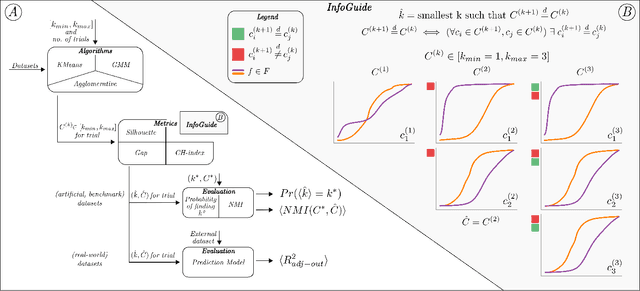
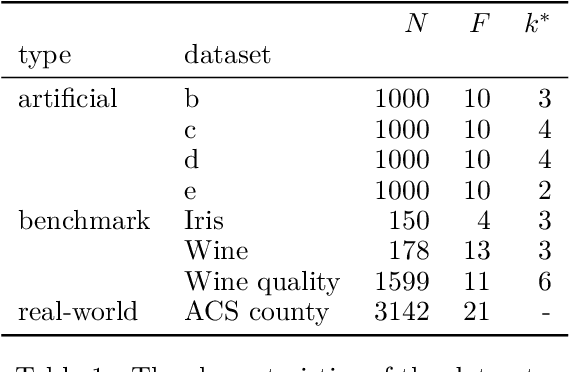
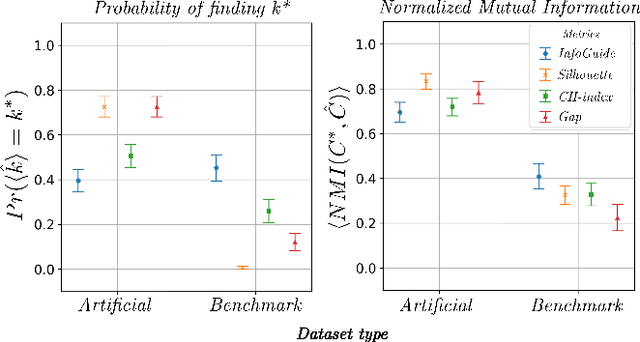
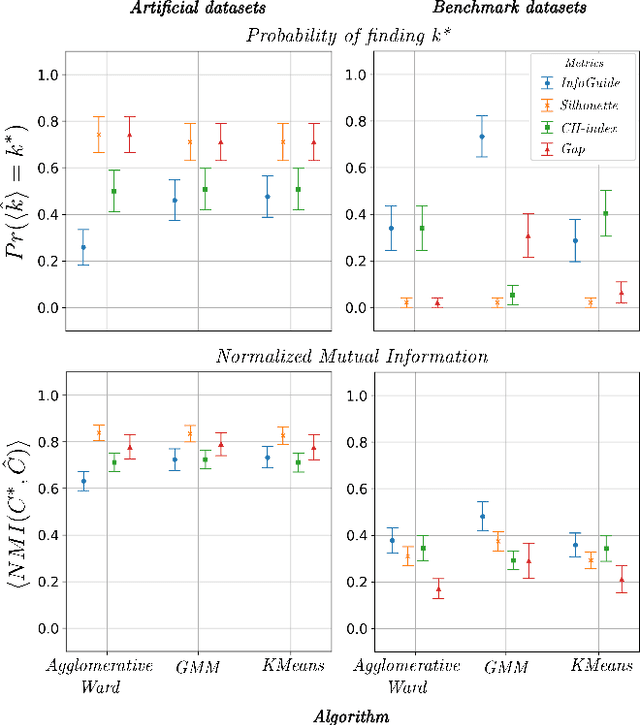
Abstract:Clustering analysis has become a ubiquitous information retrieval tool in a wide range of domains, but a more automatic framework is still lacking. Though internal metrics are the key players towards a successful retrieval of clusters, their effectiveness on real-world datasets remains not fully understood, mainly because of their unrealistic assumptions underlying datasets. We hypothesized that capturing {\it traces of information gain} between increasingly complex clustering retrievals---{\it InfoGuide}---enables an automatic clustering analysis with improved clustering retrievals. We validated the {\it InfoGuide} hypothesis by capturing the traces of information gain using the Kolmogorov-Smirnov statistic and comparing the clusters retrieved by {\it InfoGuide} against those retrieved by other commonly used internal metrics in artificially-generated, benchmarks, and real-world datasets. Our results suggested that {\it InfoGuide} can enable a more automatic clustering analysis and may be more suitable for retrieving clusters in real-world datasets displaying nontrivial statistical properties.
Network-Based Delineation of Health Service Areas: A Comparative Analysis of Community Detection Algorithms
Dec 08, 2019



Abstract:A Health Service Area (HSA) is a group of geographic regions served by similar health care facilities. The delineation of HSAs plays a pivotal role in the characterization of health care services available in an area, enabling a better planning and regulation of health care services. Though Dartmouth HSAs have been the standard delineation for decades, previous work has recently shown an improved HSA delineation using a network-based approach, in which HSAs are the communities extracted by the Louvain algorithm in hospital-patient discharge networks. Given the existent heterogeneity of communities extracted by different community detection algorithms, a comparative analysis of community detection algorithms for optimal HSA delineation is lacking. In this work, we compared HSA delineations produced by community detection algorithms using a large-scale dataset containing different types of hospital-patient discharges spanning a 7-year period in US. Our results replicated the heterogeneity among community detection algorithms found in previous works, the improved HSA delineation obtained by a network-based, and suggested that Infomap may be a more suitable community detection for HSA delineation since it finds a high number of HSAs with high localization index and a low network conductance.
Characterizing the Social Interactions in the Artificial Bee Colony Algorithm
Apr 08, 2019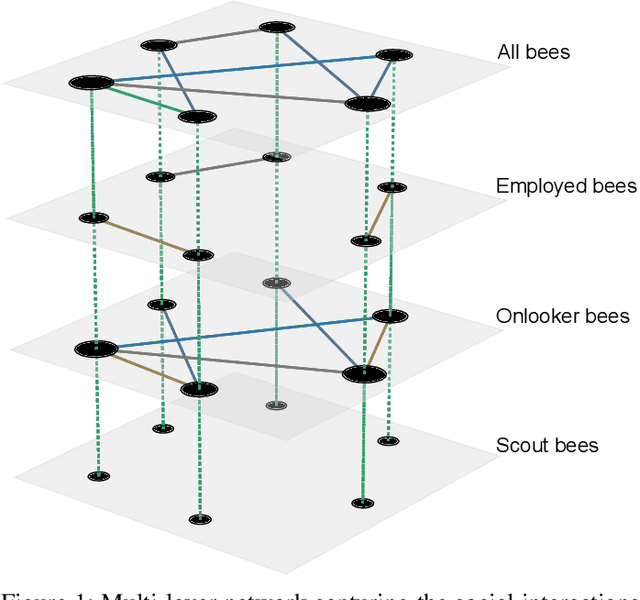


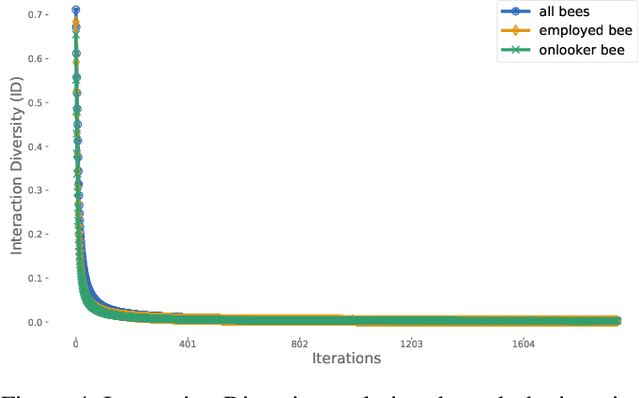
Abstract:Computational swarm intelligence consists of multiple artificial simple agents exchanging information while exploring a search space. Despite a rich literature in the field, with works improving old approaches and proposing new ones, the mechanism by which complex behavior emerges in these systems is still not well understood. This literature gap hinders the researchers' ability to deal with known problems in swarms intelligence such as premature convergence, and the balance of coordination and diversity among agents. Recent advances in the literature, however, have proposed to study these systems via the network that emerges from the social interactions within the swarm (i.e., the interaction network). In our work, we propose a definition of the interaction network for the Artificial Bee Colony (ABC) algorithm. With our approach, we captured striking idiosyncrasies of the algorithm. We uncovered the different patterns of social interactions that emerge from each type of bee, revealing the importance of the bees variations throughout the iterations of the algorithm. We found that ABC exhibits a dynamic information flow through the use of different bees but lacks continuous coordination between the agents.
Unveiling Swarm Intelligence with Network Science$-$the Metaphor Explained
Nov 08, 2018
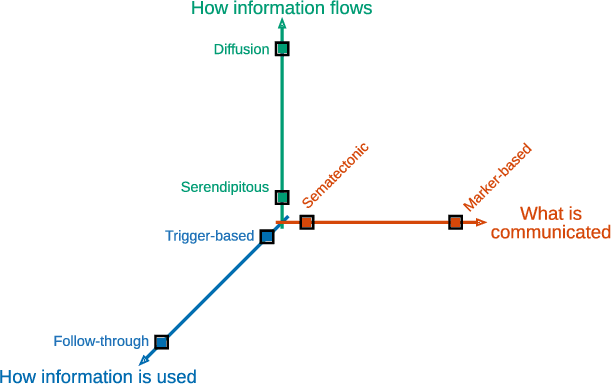

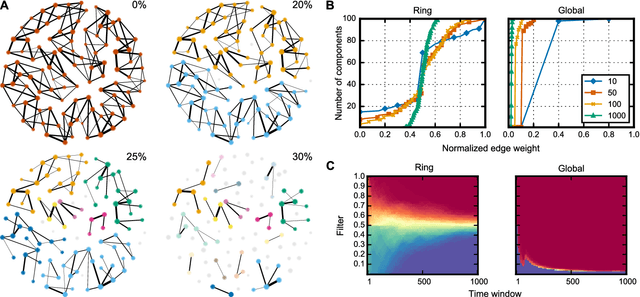
Abstract:Self-organization is a natural phenomenon that emerges in systems with a large number of interacting components. Self-organized systems show robustness, scalability, and flexibility, which are essential properties when handling real-world problems. Swarm intelligence seeks to design nature-inspired algorithms with a high degree of self-organization. Yet, we do not know why swarm-based algorithms work well and neither we can compare the different approaches in the literature. The lack of a common framework capable of characterizing these several swarm-based algorithms, transcending their particularities, has led to a stream of publications inspired by different aspects of nature without much regard as to whether they are similar to already existing approaches. We address this gap by introducing a network-based framework$-$the interaction network$-$to examine computational swarm-based systems via the optics of social dynamics. We discuss the social dimension of several swarm classes and provide a case study of the Particle Swarm Optimization. The interaction network enables a better understanding of the plethora of approaches currently available by looking at them from a general perspective focusing on the structure of the social interactions.
 Add to Chrome
Add to Chrome Add to Firefox
Add to Firefox Add to Edge
Add to Edge